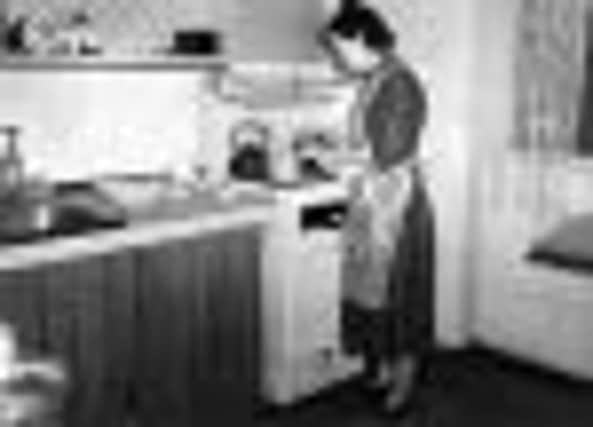Food and drink: The retro menu for desperate housewives


Community groups and organisations such as Citizens Advice Scotland are reporting an increase in the numbers of families turning to charities for food supplies as their income fails to keep pace with necessities.
But despite all that, few of us radically change our eating habits to cope with dwindling finances. Instead we try to continue buying the same meals and ingredients – but for less money.
Advertisement
Hide AdAdvertisement
Hide AdSo, sales of budget supermarkets and own brands have gone up, with the better off turning to them in an effort to keep costs down while generally eating the same things.
Just as retro fashion is popular now in the recession, it may be time to try a bit of retro shopping and cooking.
Families today eat a relatively high proportion of meat and fish. Consumption rose by well over 50 per cent between the Sixties and 2010.
But the experience of those who lived through the Fifties and Sixties, including Libby Anderson, pictured right, policy director of Edinburgh animal charity Onekind, was that meat was rarely served and tended to be a cheaper, tougher cut that required slow cooking such as mutton, or a boiling chicken, or offal such as kidney, liver or heart.
There was very little waste, with left-overs invariably transformed into another meal such as bubble and squeak or rissoles – patties made with a few ounces of cooked meat minced together and bulked out with breadcrumbs, onions, seasoning and egg, then fried.
Libby, who has been vegetarian for many years, said: “Even with cheaper cuts, there was hardly any intensive farming so the quality was better.
“Many people believe it was a better diet with plenty of basic, British veg, such as carrots and potatoes, much less fat, and an emphasis on good carbohydrates to support greater activity at a time before cars were the norm. Obesity was rare. Above all, the diet was cheap.”
Today, Libby is a keen cook who is still inspired by the diet she remembers from childhood, and finds it easy to put a vegetarian twist on it.
Advertisement
Hide AdAdvertisement
Hide Ad“Regular classics included potato and cheese pie, or savoury bread and butter pudding, like its sweet namesake but made with onions, tomatoes, peas and cheese. Puddings were good ‘filler-uppers’ such as tapioca, rice pud or semolina, rather than calorie-laden treats. Now fewer families cook from scratch – or know how to – which means many people are paying for the preparation and pre-cooking of ready meals.”
So if you are feeling the pinch in your purse and want to economise, try these retro tips:
• Cut down on red meat, chicken and fish and try at least two or three meat-free days a week. When you do eat meat, buy better quality high welfare – best for you and the animal.
• Cook from scratch – don’t pay someone else to do it.
• Use garlic, cumin and other herbs and spices to flavour up simple dishes or old-fashioned budget recipes from books or the internet.
• When all else fails, soup it up. Slightly discoloured vegetables or wilting carrots may have marginally fewer nutrients, but they still make a good blended soup and are fine for stews or curries.
• If you buy fresh herbs such as parsley or coriander, use the stalks for cooking and save the leafy end for chopping and sprinkling.
• Try making your own bread. Soda bread is easy and quick to make and does not require yeast or “proving”.